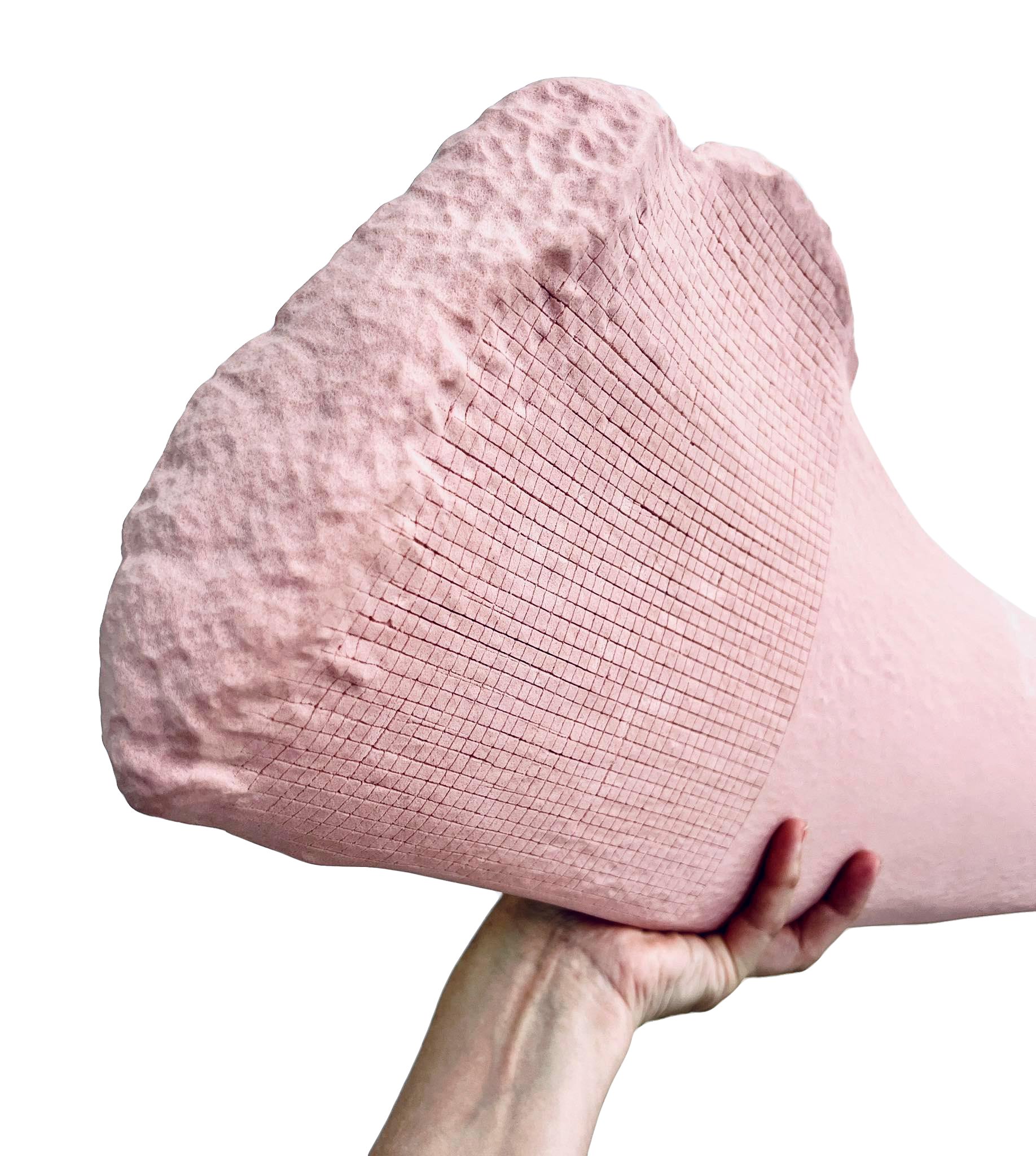LAST SEASON
Anna Júlía Fridbjörnsdóttir
15. September – 22. October, 2022
“. . . out there past men’s knowing, where the stars are drowning and whales ferry their vast souls through the black and seamless sea.
Cormac McCarthy
The work of Anna Júlía Fridbjörnsdóttir employs diverse mediums and materials to examine contemporary environmental concerns through a poetic perspective, imaginatively reconciling human-based perception systems within wider ecological and cosmic dimensions. In the exhibition Last Season, Fridbjörnsdóttir invokes diverse notions of time, creating a concrete dialogue between the cyclical time of the earth and the all too human quest to position ourselves vis-à-vis earthly and stellar cycles. Taking cues from fashion, Fridbjörnsdóttir playfully invokes its seasonal nature as a strategy to grasp the ‘immeasurable’ distance between our anthropogenic models that seek to limit time and the vast, cyclical patterns of ecological and cosmic processes. Her work references medieval instruments for using the stars to perceive time and location as a medium to express our navigational desires (physically and existentially) and the loss of our ability to read natural signs and thus our connection to the environment.
Fridbjörnsdóttir’s work ultimately brings together diverse systems of representation, each with its own specific epistemological relation to the environment, to create hybrid sculptural objects that materialize specific ‘readings’ of ‘nature’ across history. For example, the works Pre-fall and Runway consist of a 3D milled whale bone made from a scan in the collection of the Natural History Museum in Copenhagen. The bones are from an Atlantic Right Whale, once common in the waters around Iceland and now on the verge of certain extinction. Fridbjörnsdóttir has engraved the concentric diagrams used to read latitude and time from an ancient Astrolabe, piercing the bone at a significant seasonal date, while covering one side of the bone with reflective aluminum, which provides a further surface for spatial positioning. The juxtaposition is especially poignant since the migratory routes of this species fatally intersect with major transatlantic shipping corridors.
In the work Runway we are presented with the smallest rib of the Atlantic Right Whale that has become amalgamated with elements from horary quadrants that were used to calculate various readings, such as longitude, latitude, and time of day. In Edition Fridbjörnsdóttir further amplifies this strategy with aesthetic concentration by lacing the pattern of a cylindrical sundial or ‘Shepherd’s dial’ around a cast Walrus tusk of an extinct species formerly native to Iceland. Engravings and drawings are used by the artist across these works and others in the exhibition, expanding references to the history of cartographic technologies from pre-history up to digital scanning, and thus to the changing perception of, and relations to, our place in the natural world. If the elaborate geometric designs of the Astrolabe represent a slice of heaven in the hand, other works invoke cosmic relations in minimally aesthetic ways: A group of works - Autumn, Winter, Spring and Summer uses gold leaf on simple graph paper to represent seasonal percentages of sunlight. The grid, another ordering system all too commonly overlaid on the landscape, is foil to several other wall-hung works. Finally, Silhouette uses an unfolded screen structure adorned with sketches of sea bed species and navigational digits indicating depth overlaid with a star map with cutouts in the paper. Hanging on the structure, as if casually placed whilst undressing, a ‘necklace’ made of replicas of deep sea corals overlaps the drawings.
Overall, the exhibition Last Season integrates navigational and representational portrayals of nature, nesting slowly developed organic drawings and diagrams that refreshingly invoke the meditative time of the artist’s hand and bring in another dimension (out of) of time. Paradoxically, it is also an expanded concept of time and our abstract relation to the future that structures the phenomenon of ‘temporal discounting’, a devaluing of future reality, that in turn has underpinned the inadequate human response to global warming.
In Fridbjörnsdóttir’s work, urgent environmental questions provide the backdrop for a unique sculptural language that directly foregrounds natural beauty and processes prompting the imagination to question: how can we listen with attention and respect to the cycles, processes, and deeply embedded signs that we share with nature and the cosmos once more?
Text by Rodney LaTourelle

